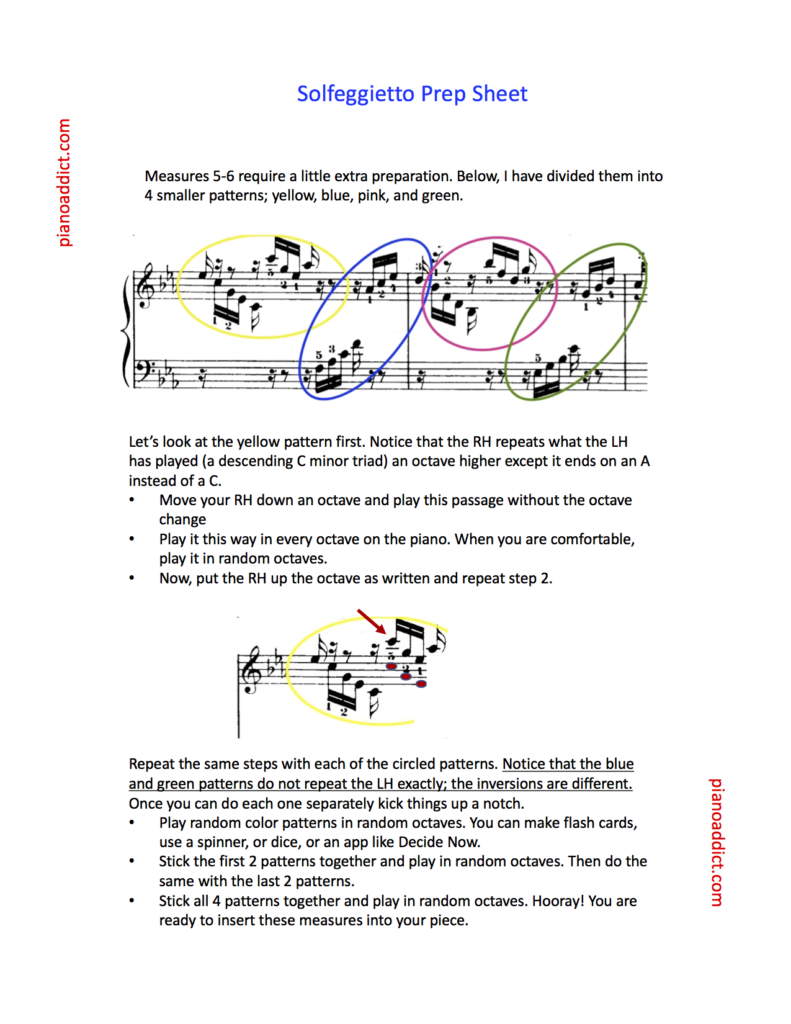Solfeggietto Crash and Burn

Students love to play Solfeggietto. They love the cascading patterns and how it feels to pass the patterns in waves from one hand to the other. They love how it sounds. They love how they can swing it and jazz it up. They also feel like hot stuff once they have mastered it. And well they should.
Solfeggietto looks pretty intimidating. Mostly it’s not. But there are 2 measures that cause many students to crash and burn. They hit these 2 measures and just can’t get past them. The really perfectionist types won’t even try because they want to master everything before they learn something new. The spinning wheel of musical learning death happens.
When this happens in any piece the first thing I do is assign all the passages similar to those they have already successfully learned. I tell them to only practice those sections. We circle them in color, use emojis, or, for the more advanced, use actual form terminology. For some, I actually have to copy the score and cut out the sections they are to practice. Maybe they get distracted by all the other bright, shiny notes?
Once the student has everything but the section that caused them to crash and burn, we go back to it with a fresh perspective. They are usually rather surprised that a problem they thought was so big wasn’t really. They also have the confidence from learning the other sections to bring to their practice.
Measures 5-6 in Solfeggietto is just such a crash and burn place. It’s unfortunate that it occurs so early in the piece. Lots of students want to give up right then. I want to avoid that, so I created a Solfeggietto prep sheet. If the student has good reading skills and is older I actually hand it out once I have modeled at least the first part. If the student is younger we do it by rote and I mark the steps in their assignment each week.

Playing the RH without the octave change allows the student to really feel, see, and hear the repetition (yellow, pink) or variation (blue, green). Drilling each color in random octaves solidifies the patterns and creates just a little extra difficulty. Then, when the octave changes are added back in, the student has only that one technical issue to deal with and can spot where they are going confidently and securely.


